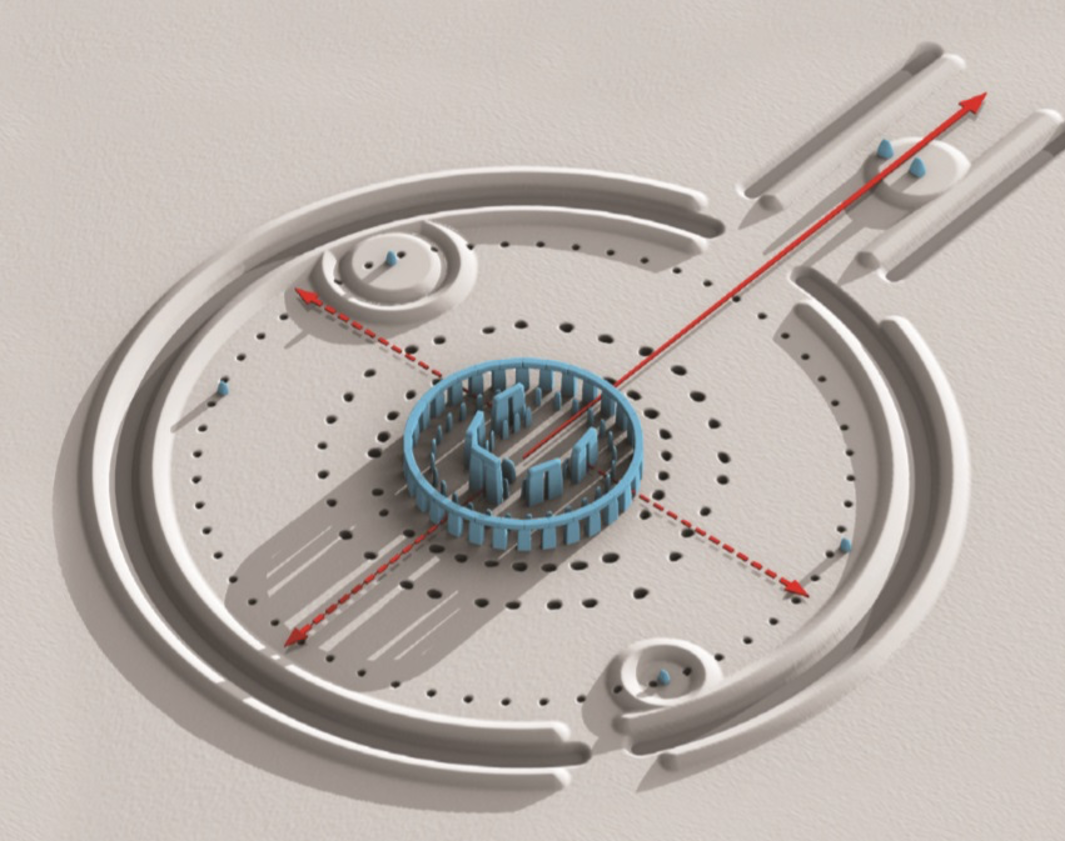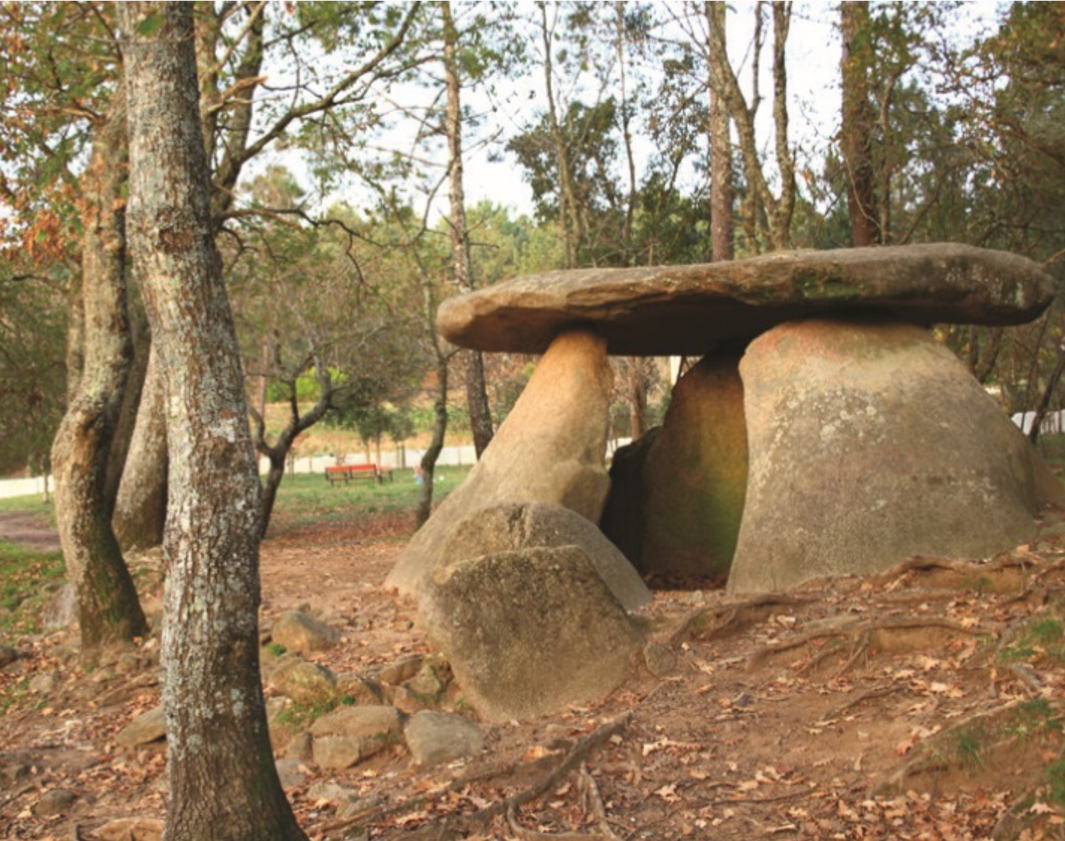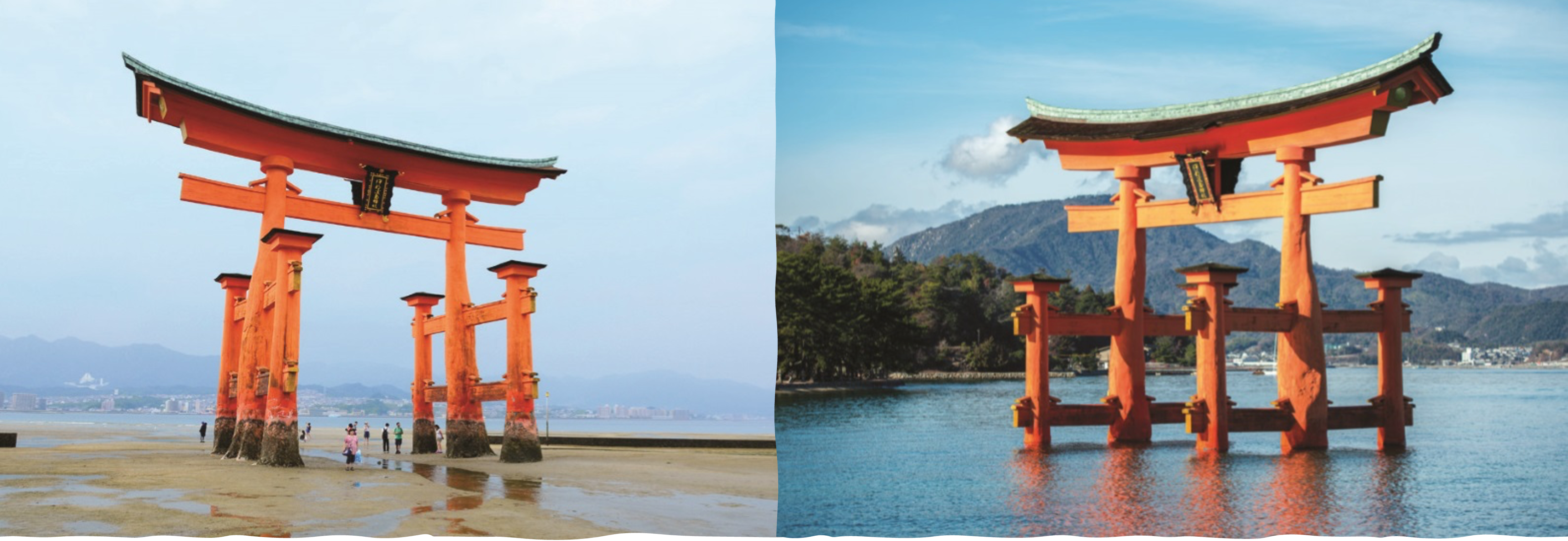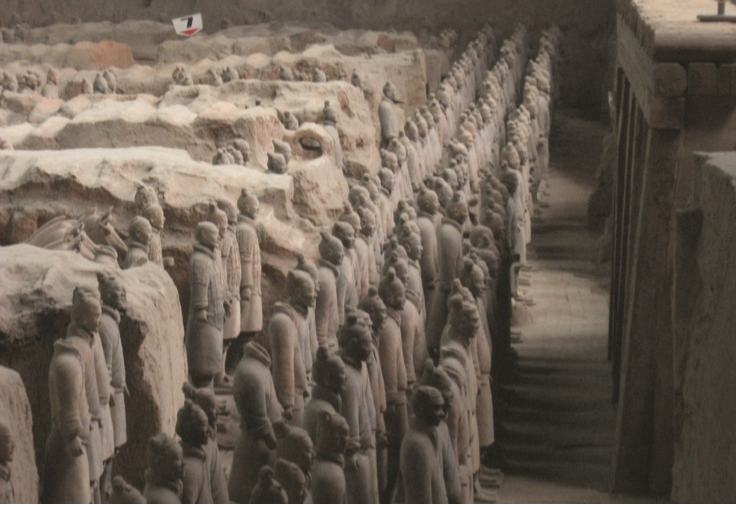- Chapter 10: Art and Ritual Life
- Presentation
- Lecture Video
- Quiz
Chapter 10: Art and Ritual Life
Learning Outcomes
After completing this chapter, you should be able to:
- Identify and describe the different architectural forms that are used for diverse ritual purposes and those associated with specific religious groups
- Recognize a variety of symbolic and functional components of architectural centers for worship, including building parts, auxiliary structures, and furniture, as well as to discuss its significance and uses
- Cite and describe sculpture, paintings, and a variety of religious objects that are used to express beliefs, to teach religious doctrine, and to perform ritual acts
- Recall and discuss some of the specific forms of art associated with funerary and memorial functions in different belief systems
Exterior Ritual Spaces
Art and architecture have even been used to express our deepest human interests, including the universal concerns with the meaning of human life and whether or not our spirit will continue in an afterlife. Thoughts and beliefs about these concerns have led individuals to create art about the ethereal notions and using art and architecture to give a concrete form to these ethereal notions. Stonehenge in Wiltshire England provides us with insight into the early evolution of a ritual location. Built between 3000 and 1500 BCE it has a configuration of astronomical implications
Digital Rendering of Stonehenge
- Megaliths: large stones
- Stonehenge megaliths: 13 feet high and 7 feet wide, weighing more than 25 tons
- Liturgical: Religious Ritual
The ritual offerings or sacrifice tale and portals are placed within relationship to the sunrise at the summer solstice. It had concentric rings made of wooden posts, earthen ditches, and 30 megaliths. It is centered around an altar. The altar is a liturgical or religious ritual piece of furniture. Arrows show the alignment of light at the solstice.
Dolmen of Oleiros, Spain
- Dolmen: an upright marker
- Cromlech: a circular arrangement of megaliths
A place where two or more megaliths support another horizontal stone we get either a Dolmen or a Cromlech. This example from Spain is around 6000 years old and is thought to be a burial spot of local important figures.
John Webber, Drawing of Heiau at Wimea, 1778-9.
- Heiau: A Hawaiian temple composed of a Polynesian raised earthen or stone temple platform in an enclosed area
A Heiau (hey-ow) is a Hawaiian temple composed of a Polynesian raised earthen or stone temple platform in an enclosed area. They might also have contain stone markers and cult images. Many Heiau were destroyed at the official end of the Hawaiian religion in the 19th century. Some were rebuilt as attractions and memories.
Central American Religion
In Central America the Olmec, Maya, and Aztec built large temple complexes dedicated to religious worship, including animal & human sacrifices.
Gateway for Ritual or Sacred Space
- The torii gate at Itsukushima Shrine on the island of Itsukushima at low tide and high tide.
The gateway is another architectural method for creating or recognizing a ritual or scared space. Often found in Asian religious settings. Shinto religion is an ancient Japanese religion focused on veneration of deeds and images of ancestors. The torii gate or Shinto gateway mark sites of important ancient events or frame beautiful views. The “floating gate” appears to float at high tide.
The Sacred Interior
Sacred interior spaces offer several advantages. They control access to the space. And they may act as a metaphor for personal encounter with the sacred within oneself. Many sacred interiors meet a variety of purposes and needs. Not all sacred interiors require a physical building. Rituals have been conceived as part of a natural setting such as an open field, sacred grove of trees, cave, spring or any other sacred spot.
Features and Forms
- Minaret: a tower within a mosque that was used to call Muslims to prayer 5 times a day
There are many symbolic features of architecture associated with worship. The Islamic minaret was developed as a tower within a mosque that called Muslims to prayer. Also may have been developed to rival church architecture.
Church of the Covenant
- Bell towers: called Christians to worship since the Medieval period
Bell towers have called Christians to worship since medieval period. Also used to announce emergencies or announcements from the town.
Washington National Cathedral
Bell towers visually imply Christian presence. Usually part of the building façade. Multiple towers are used to emphasize width of the façade, or other parts of the building. Also be recited independently adjacent to the church.
Relief of a Sacrificial Altar
Ritual practices often centered around an alter. Ancient Romans would sacrifice animals for their deities. Fire sometimes held symbolic significance. Both shown in this relief of a sacrificial altar.
Master Sigraf, A Romanesque baptismal font from Grötlingbo Church, Sweden, c. 1190.
Water was an important element in some rituals. Ritual ablutions or cleansing were standard parts of Christian religion in terms of baptisms.
Another symbolic liturgical furniture is the pulpit or minibar. A place where the congregation would gather either below or near, to hear sermons or reading of scriptures. These were usually highly decorated.
Sculptural and Painted Expressions of Belief
A tremendous variety of other objects express personal belief or devotion. Many adorn religious buildings but some are used in private or family settings. Some depict deities or gods.
Virgin and Child of Jeanne d’Evreux
The graceful Virgin of Jeanne d’Evreux was a gift in the early 12th century from the French queen to the Abbey of Saint-Denis, the site for royal burial at the time. Here she hold the infant Christ-child who tenderly touches her face. The sculpture is made of gold. Some depict patron saints or dedicated intercessors.
Ritual and Devotional Objects
Pietà, In religions where figural images were allowed, the use of cult statues and imagery of deities were key focal points for worshippers.
Lindau Book Gospels Front Cover
Liturgical books of scripture held special significance. Covers were richly adorned.
Limbourg Brothers, The Nativity, c. 1411-1416, tempera on vellum.
Individual pages of these books were illustrated or illuminated. Made by the Limbourg Brothers, the Book of Hours was heavily illustrated. Scenes of Nativity showing Christ Child, with the Virgin Mary of the left; joseph to the right and God the Father at the top.
Limbourg Brothers, January, c. 1411-1416, tempera on vellum.
This work was well known for its calendar pages. This January page depicts a lavish banquet. Scenes showed off the duke’s wealth, land holdings, and buildings.
Mandala
A significant visual spiritual event is the ritual creation of a sand mandala. These took weeks to complete and were destroyed by either fire or being discarded in a lake.
Masks and Ritual Behavior
Masks are found in all cultures throughout history. Mask and the rituals in which they function may have been among the earliest ways in which humans acknowledged the objects and forces of nature as spirits or conscious beings. In animist cultures the forces of nature, objects, and animals are all thought to have spirits or essences. Contemporary African tribal rituals generally center on a number of life issues. In Burkina Faso animal makes enter the community to purify its members and protect them from harm.
Yoruba Egungun Dance Costume
Masks are also accompanied by costumes. The Yruba people have masquerades that involve both masks and costumes.
Frank G. Carpenter, Eskimo Medicine Man, c. 1890s, photograph.
In the Inuit cultures located in the Arctic regions of North America had ceremonies and myths about caution of the harsh weather. Many totemic and mask images are warnings against danger of bad choices.
Havré (Belgium), chaussée du Roeulx- The Gilles.
Marci Gras celebrations and parades are another decorative costume usage. Masks were worn to conceal the wearer’s identity so typical social expectations could be cast aside. Mardi Gras means ”Fat Tuesday” and is celebrated by many Christians today before the season of Lent (40 days of fasting before Easter, the day it is believed Christ rose form the dead). Originally associated with pagan rites of spring.
Funerary Spaces and Grave Goods
Banditaccia (Cerveteri). Considerable bodies of art have been found at grave sites related to funerary customs. Grave goods give insight into beliefs and practices of burial and afterlife. The Etruscans in Italy (800 – 264 BCE) developed elaborate burial practices. They used Tumulus – or underground houses for burial. Chambers create a necropolis not reserved for the highly born. They decorated space with sculptural reliefs of daily objects they wished to have in the afterlife.
5th century BC fresco of dancers and musicians, Tomb of the Leopards, Monterozzi necropolis, Tarquinia, Italy.
Like the Egyptians, the Etruscans believed they would join family in celebration in the afterlife. Many paintings show banqueting scenes. Terracotta sarcophagi include portraits of individuals and couples who expected to reunite and continue their married life in the afterlife. Etruscan terracotta sarcophagi included portraits of individuals and couples who expected to reunite and continue their married life in the afterlife.
Terracotta Army
A remarkable burial ritual is the Ancient Chinese Terracotta Army of Emperor Qin Shi Huang found in 1974. 8000 figures, many warriors thought to guard the deceased emperor. Also showed entertainers. In the tomb they were ordered by social ranking. And originally brightly colored. Buildings used for sacred purpose have their design determined by the requirements of specific rituals and cult usages.





